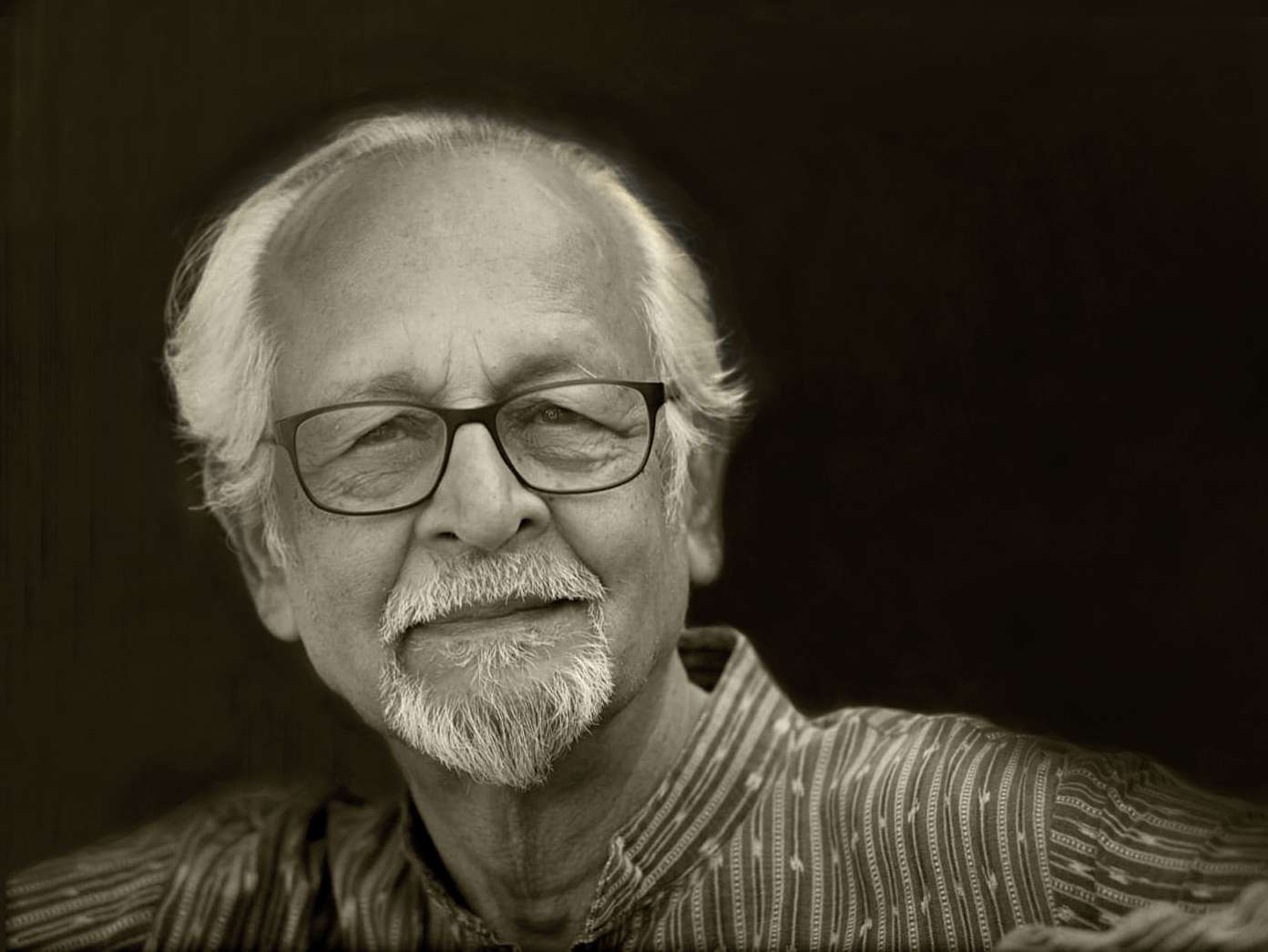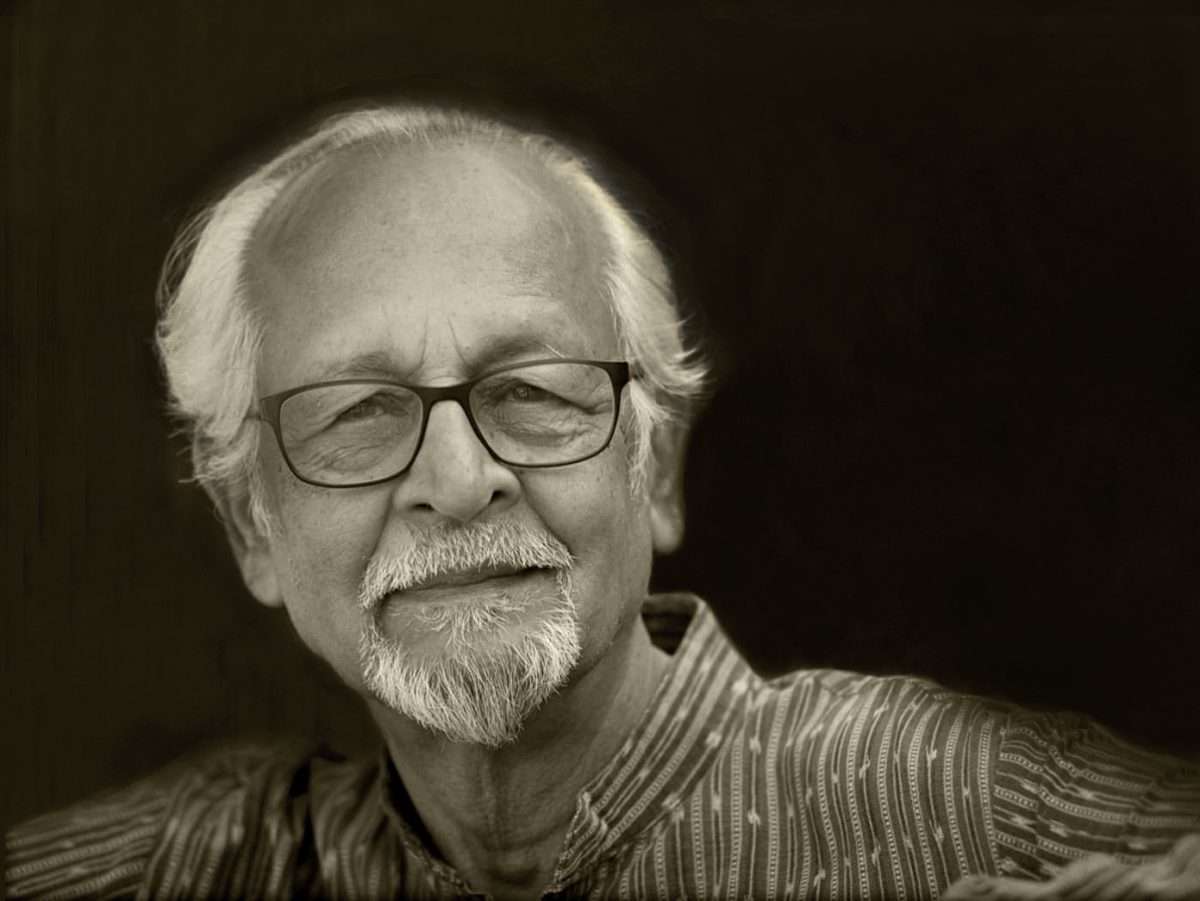Interview - Jai Krishna Agarwal
 Jai Krishna Agarwal is a printmaker and painter who also enjoys Photography. In 2015, the U.P. Government recognised his contributions to printmaking in India by conferring the Yash Bharti Samman.
Jai Krishna Agarwal is a printmaker and painter who also enjoys Photography. In 2015, the U.P. Government recognised his contributions to printmaking in India by conferring the Yash Bharti Samman.
He comes from Kot, Amroha, and now resides in Lucknow.
1. As an artist and teacher, how do you differentiate between acquired skills and natural talent?
During my long teaching career, I have encountered numerous students initially rated as average, but their zest to acquire skills surpassed even those with natural talent. I feel that anybody can develop skill, but to put it to creative use, one has to be special with the inborn qualities of a thinker and should be highly imaginative with an intense desire to express/create.
2. With the advancement in artificial intelligence, do you feel human creativity will be a casualty in the long run?
Every time we encounter something new, the question of what is next is inevitable. Artificial intelligence will certainly affect human activities, but it’s too early to fear it and label it a casualty. It can be an extension and open new vistas for creative activities.
3. You started with manual cameras in their early form, but a lot has changed since then. Digital photos are rapidly filling our storage spaces. How do you see this excess?
In fact, digital technology has solved the problem of space. A thumbnail-sized pen drive can store thousands of images. In a way, you are right; analogue Photography using photosensitive negatives and paper was expensive, but digital Photography is a one-time investment. You initially pay for the equipment and no further expenditure. This has resulted in the indiscriminate shooting of pictures crowding on your computer. Initially, I also suffered from this problem, but soon, I learned to be selective in taking photographs. Even when I had to take many pictures, I deleted unwanted stuff soon after downloading it on my computer. I am trained as a painter and printmaker. Photography is another medium of creative expression for me. Instead of documenting everything striking, I usually select my subjects and recreate them using my imagination.
4. Which has been the most satisfying part of your life- the journey as an artist or the role as a teacher?
The most satisfying part of my life has always been the success of my students. The satisfaction I got from my creativity was always momentary. I have been actively involved as an artist for over six decades and have reached the age of eighty-three, but my best has yet to come.
As a visual arts teacher, I strongly believe that if you have a question, you also have an answer within yourself. My role was to impart technical knowledge to my students, evoke the power of self-judgement and learn from the environment amongst them.
5. You keep sharing your memories of Amroha on social media; the city, too, has moved on since you left. Is there something that you would like to change in Amroha?
Amroha has a very special place in my heart. Like my parents who gave birth to me, I initially emerged as an artist from the soil of my place of birth. It was unfortunate that my ambitions drifted me away from Amroha. I travelled extensively and finally settled in Lucknow. I had been deeply involved in the mystic world of creativity. Still, age has slowed me down a bit also socially; I am not very active, which leaves me with a lot of free time to brood; in fact, my past has become my friend, and with knowledge and understanding, I can communicate with my past life much more meaningfully. The formative years of my life were spent at Amroha, and I cherish every moment of those golden days, which I keep sharing on social media as and when reminded.
As far as changes in Amroha, it’s all time-related. Every city has to grow, but we can’t ignore the reminiscences of our glorious past. Unfortunately, the only surviving oldest monument, Moradabadi Gate, has lost its grandeur. Other reminiscences of the past are also decaying and need our concern. I am saddened to see the condition of our own home, Moti Bhavan. However, Amroha still has a lot but requires our serious efforts to maintain its monuments and traditions.
6. Have you ever considered doing something in Amroha, an exhibition of your work or a workshop for budding artists?
Yes, definitely. I want to interact with the people of Amroha, but for the kind of activities I am involved in, they require some infrastructural facilities, which are lacking there. Although I am well connected with many Amrohvi through social media, I would certainly try to come close for direct interaction and share my creativity and experiences, especially with the young ones.
7. Moti Bhavan has been an early inspiration for your art and a strong connection to the past. Could it be restored to its former glory?
Moti Bhavan, our ancestral home at Amroha, was built in 1933 in Indo-Saracenic architecture style. I was born and brought up in this house playing hide and seek. Spending most of my time in this huge haveli, I became close to architectural structures and contours. At times, I felt that I was even communicating with them. Later, when I explored the mystic world of line, form and colours, I finally came up with architectural forms and structures, using them as prime elements of my creations since I had a close association with them from the beginning. Unfortunately, Moti Bhavan is decaying. We don’t know its future, but I would like to see and feel it as it used to be during my childhood.
8. Finally, how would you like to be remembered?
As an Amrohvi.
Jai Krishna Agarwal in conversation with Inam Abidi Amrohvi. (March 6th, 2024)

